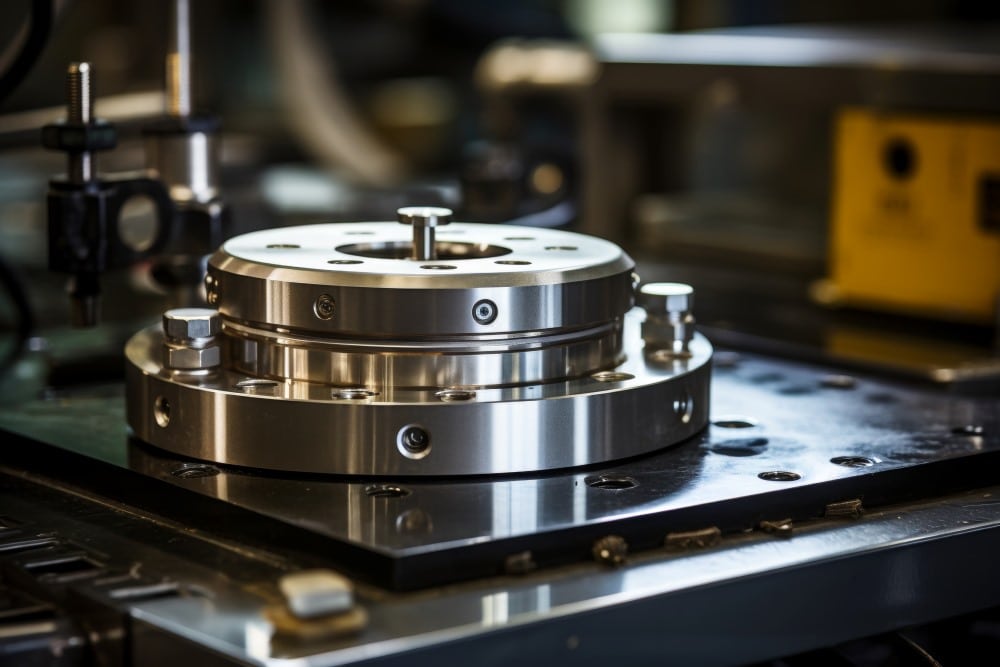
Sensitivity is key to how well a load cell works. It’s all about how well the load cell detects and responds to changes in weight or force.
In this article, we will go over what sensitivity is, how to calculate it and why it matters in industrial applications.
We will look at the typical values and units for sensitivity and how they affect accuracy, compatibility and reliability.
Whether you’re working with heavy machinery or precision equipment, understanding sensitivity is the key to getting the best out of your load cells.
Let’s dive into why sensitivity is so important for industrial processes.
What is Load Cell Sensitivity?
Imagine you have a big hopper or tank in your factory, and you are using a load cell to weigh how much material is in it. Sensitivity, in this case, tells you how well the load cell can detect weight changes.
For example, let’s say your load cell has a sensitivity of 2 millivolts per volt (mV/V).
This means that when 10 lbs of material is added to the hopper, the load cell will produce a small, predictable electrical signal that increases by a specific amount.
The more sensitive the load cell is, the easier it is to detect small changes in the weight of material being added or removed.
This is important in an industrial environment because:
- Precision: If you are dosing chemicals or batching ingredients you need the load cell to detect even small amounts accurately to maintain product quality.
- Efficiency: A sensitive load cell can prevent overfilling or underfilling and save you money and reduce waste.
- Safety: In applications like lifting heavy equipment a sensitive load cell can detect small weight imbalances that might indicate a problem.
But here’s the catch: too much sensitivity can pick up “noise” like vibrations from nearby machines or even temperature changes, which can interfere with the readings.
That’s why choosing the right sensitivity for the environment and task is key—it needs to be sensitive enough to do the job without getting distracted by the industrial noise around it.
What Is the Typical Sensitivity of a Load Cell?
The typical value of load cell sensitivity is usually 2 millivolts per volt (mV/V). This means that for every volt supplied to the load cell (excitation voltage), the output signal will change by 2 millivolts for the full-rated load of the cell.
For example, if a load cell has a capacity of 1,000 kg and the sensitivity is 2 mV/V and it is supplied with 10 volts of excitation, the output signal will range from 0 millivolts (no load) to 20 millivolts (full load of 1,000 kg).
Why Does It Vary?
Sensitivity in load cells can vary based on the specific needs of the application and the environment in which they are used.
- Standard Range: 2 mV/V is common, but load cells can be 1 mV/V to 3 mV/V or even more, depending on the design and application.
- High-Sensitivity Applications: Load cells used in very precise applications like laboratory scales may have higher sensitivity.
- Low Sensitivity Applications: Load cells used in heavy loads or harsh industrial environments may prioritize durability over sensitivity, so their sensitivity may be lower.
In short, 2 mV/V is the typical value, but the actual value depends on the load cell’s purpose and environment.
What Is the Sensitivity Unit of a Load Cell?
The unit of sensitivity for a load cell is typically mV/V. This unit describes how much the output signal (in mV) changes for each volt of excitation supplied to the load cell when it is fully rated.
Breaking It Down
- Millivolts (mV): The output signal of the load cell is very small, measured in millivolts (1 mV = 1/1000 of a volt).
- Per Volt (V): The sensitivity depends on the excitation voltage supplied to the load cell (often 5V, 10V or another standard value).
For example:
- A load cell with a sensitivity of 2 mV/V means for every 1 volt of excitation
- At full load, the output signal will increase by 2 millivolts.
- If the excitation is 10 volts, the output signal at full load will be: 2 mV/V × 10 V = 20 mV
Why mV/V?
Using mV/V ensures the sensitivity measurement is independent of the excitation voltage so it’s a universal standard across different systems and setups. It allows engineers to predict the load cell’s performance under different conditions.
How Do You Calculate Load Cell Sensitivity?
To calculate load cell sensitivity, you divide the output signal change by the excitation voltage and the full rated load of the cell. The formula looks like this:
Sensitivity = Output Signal Change (mV) / Excitation Voltage (V) × Full-Scale Load (kg or lbs)
Step-by-Step Guide
1. Output Signal Change
This is the maximum change in output signal from no load (zero load) to full load, usually measured in millivolts (mV).
2. Excitation Voltage
This is the voltage supplied to the load cell, often in volts (V). Common values are 5V or 10V.
3. Full Rated Load
This is the maximum load the load cell is rated for, in kilograms (kg), pounds (lbs) or another unit of weight.
4. Divide and Simplify
Plug in the values to calculate mV/V.
Example Calculation
- The load cell outputs 20 mV at full load.
- Excitation voltage is 10 V.
- Full Rated Load is 1,000 kg.
Sensitivity = 20 mV / 10 V = 2 mV/V
So, the load cell sensitivity is 2 mV/V.
This sensitivity value means that for every volt of excitation supplied, the load cell’s output will increase by 2 millivolts at full load.
What is the Role of Sensitivity in Load Cell Performance?
Sensitivity plays a big role in determining the accuracy, precision and reliability of a load cell’s performance. It shows how well the load cell can convert a mechanical load into an electrical signal.
Here’s why sensitivity is important in load cell performance:
1. Weight Measurement Accuracy
- What it does: Sensitivity determines how well the load cell can detect small changes in weight or force. Proper calibration of sensitivity ensures the electrical output matches the applied load.
- Why it matters: In industrial environments weight measurement accuracy is critical for quality control, batching and compliance to legal-for-trade standards.
2. Compatibility with Signal Processing Equipment
- What It Does: The load cell’s sensitivity (e.g. 2 mV/V) must match the input range of connected electronics, like amplifiers or controllers, to avoid signal distortion or loss.
- Why It Matters: If the sensitivity is too low or too high for the system it will result in poor resolution or measurement errors.
3. Low-Weight Detection
- What It Does: High sensitivity allows the load cell to detect smaller weights or forces, ideal for precision applications like laboratory equipment or dosing systems.
- Why It Matters: Low sensitivity load cells might miss small weight changes, reducing effectiveness in applications where you need to monitor closely.
4. Tough Environments
- What It Does: Sensitivity can affect how a load cell reacts to environmental factors like temperature, vibration and electrical noise.
- Why It Matters: In industrial environments, a load cell with optimal sensitivity will reduce false readings caused by external factors.
5. Calibration and Maintenance
- What It Does: The sensitivity value makes calibration easier as it provides a standard for converting the electrical signal into an accurate weight measurement.
- Why It Matters: This reduces downtime and ensures consistency over the life of the load cell.
6. Load Cell Resolution
- What It Does: Sensitivity affects the smallest weight increment the load cell can measure (resolution).
- Why It Matters: In applications like micro-batching or precision weighing, higher sensitivity means better resolution so you get exact measurements.
Sensitivity is like the “translator” that converts mechanical force into an electrical signal. It directly affects a load cell’s accuracy, precision and compatibility with other systems. Choose the right sensitivity and the load cell will perform reliably even in harsh industrial environments.
Find the Perfect Load Cell Sensitivity for Your Needs – Contact Massload Technologies Today!
Now that you have a better understanding of load cell sensitivity, it’s time to apply this knowledge to your specific needs. Choosing the right load cell for your application is key to getting reliable results.
Massload Technologies has load cells for every sensitivity. Whether you need precise measurements in a lab or robust performance in harsh industrial environments, we can help you find the solution.
Get in touch with Massload Technologies today to find out how we can help your load cell needs and get your systems working better.


